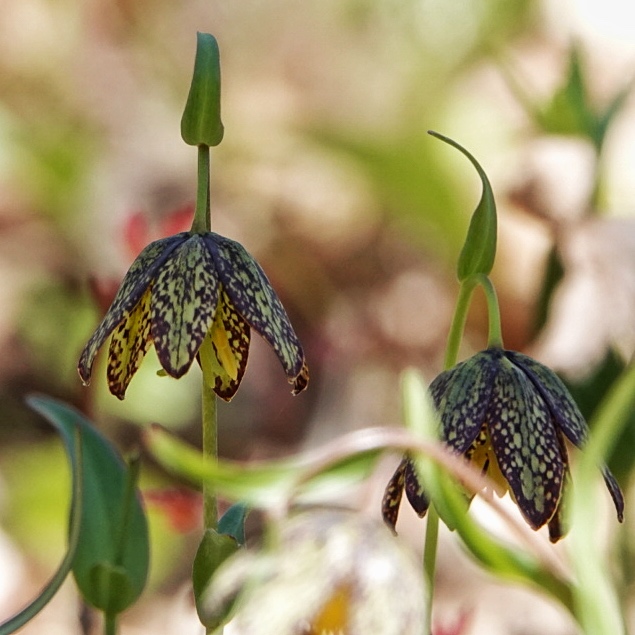
I often wonder how many Fritillaria affinis I have walked by obliviously. The mottled brown and yellow flower almost perfectly duplicates dappled shade. And when I do find them it always feels accidental, and usually comes when some insect or bird I’ve been following with my eyes disappears from view. When I do find a patch, like these near Catherine Creek, I note them and make a point to return the following year. There is something very restful about the muted shades of these flowers, like the dependable aunt with her sensible shoes and modest clothing.
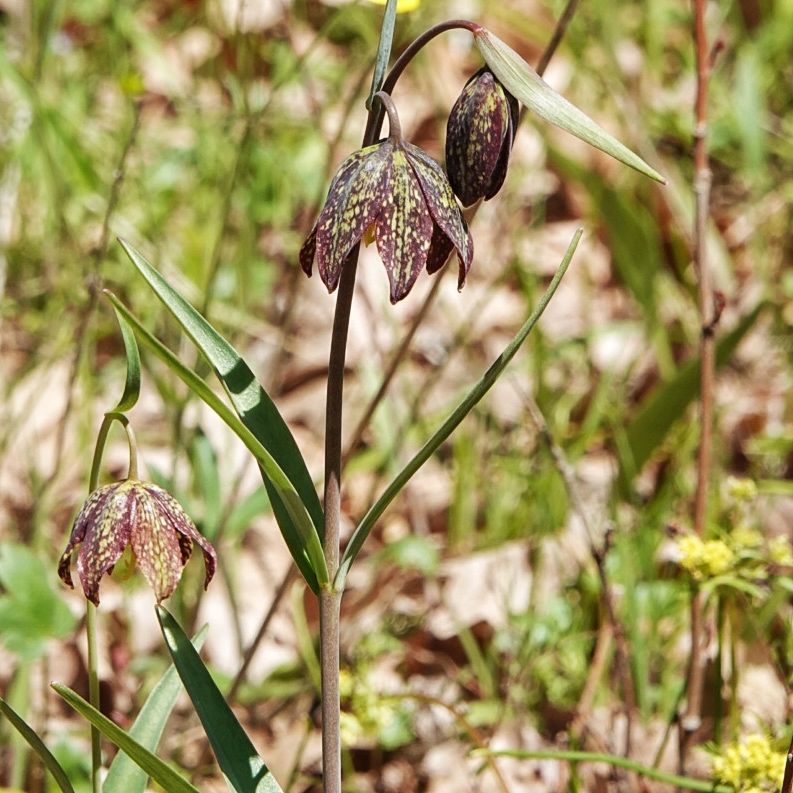
I have always called these checker lilies. I’ve also heard them called chocolate lilies, and read about them having the common names mission bells and rice-root fritillary. But both checker lily and chocolate lily are also common names for other brownish fritillaries, so it can’t be said to be standardized. This is a highly variable species and thus also engendered many different scientific names in different locales, including F. lanceolata, F. multiflora, F. parviflora, and F. mutica amongst many others.
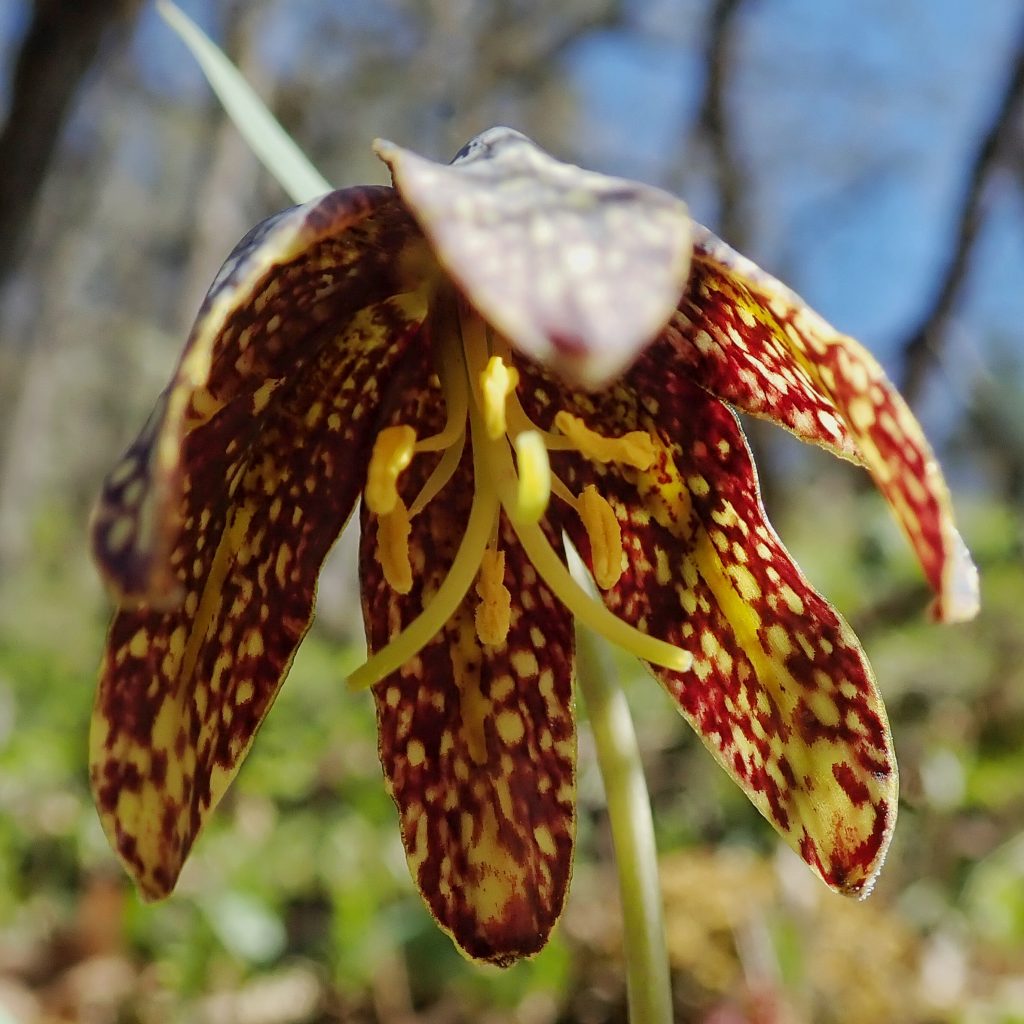
Some indigenous cultures in the PNW, notably the Salish tribes, ate the steamed bulbs of this plant, as well as the seed pods, although the seed pods are particularly bitter and were never prized. The bulbs, however, were popular enough to be valuable trade goods, though never quite reaching the commodity status of camas, which grew in much greater numbers. And now the numbers of Fritillaria affinis have dropped low enough that harvesting the bulbs as a food source cannot be justified.
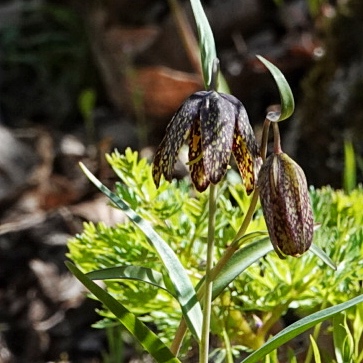
This plant does not produce a flower every year. During many years they only produce what is called a nurse leaf, much broader than the normal leaf, which photosynthesizes enough sugar to be stored in the bulb to power the next flowering cycle. Knowing this gives me even greater appreciation for the ones that are able to make the effort.
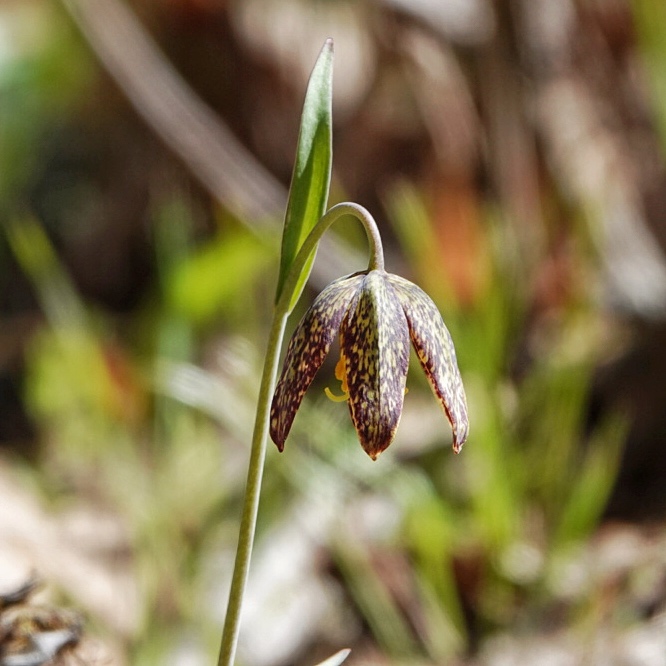
Description– Fairly tall lily (up to 30” tall) with nodding flowers; leaves long and narrow, usually 3 per irregular whorl on the upper part of the plant; flowers mottled brown to purplish brown, with checks and streaks of yellow to green; nectary is a lanceolate, light colored area in mid tepal; seeds (capsules) prominently winged.
Similar species–F. atropupurea has shorter, diamond shaped tepals; F. camschatcensis has tepals with much less to no checkering, has ridged inner side of tepals, capsule is not winged, usually has whorls of 5+ leaves around the stem, and flower has an acrid smell.

Habitat– Openings in forests and woodlands, and meadows and grasslands, up to 5,000’.
Range– Western North America; in our region it is found from the east slope of the Cascades west to the Pacific, as well as nw California, and montane regions east of the Cascades.
Reproductive timing-Blooms late March through May
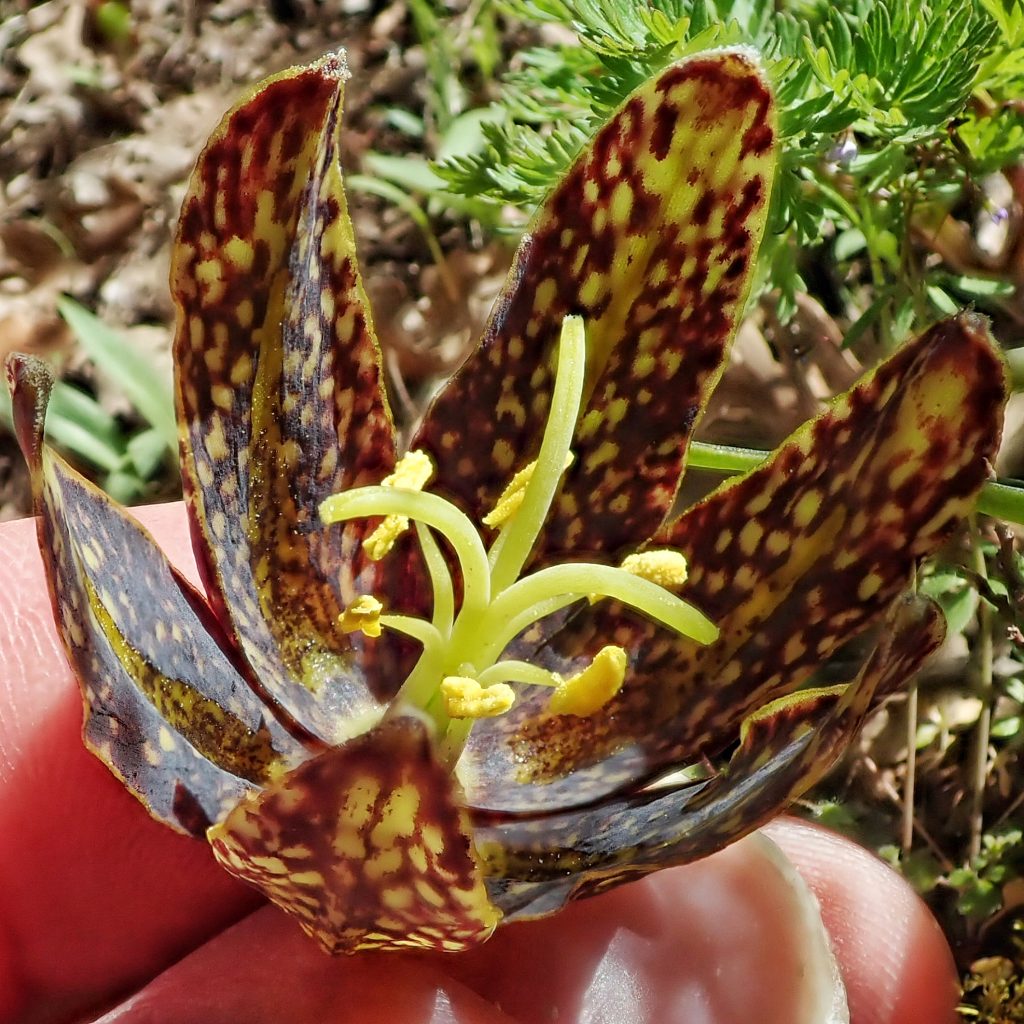
Eaten by– Various bees collect nectar and pollen from these plants, and squirrels, mice, and voles eat the bulbs, but deer and other browsers avoid it.
Etymology of names– Fritillaria is from the Latin for a checkered dice box, which refers to the mottled tepals of several species in this genus. The specific epithet affinis is Latin for ‘related’ and refers to this plant being representative of the whole genus.
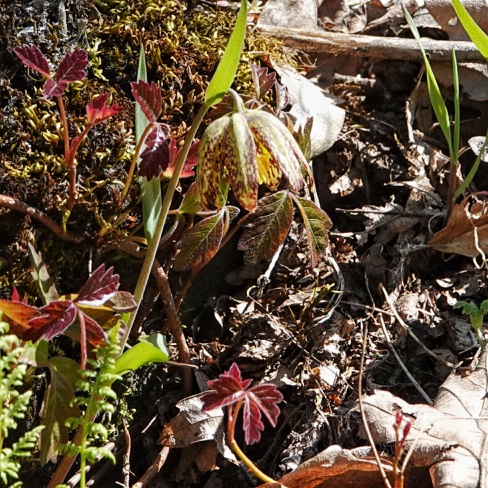
Fritillaria affinis | Mission Bells | Wildflowers of the Pacific Northwest
http://www.efloras.org/florataxon.aspx?flora_id=1&taxon_id=242101613
http://biology.burke.washington.edu/herbarium/imagecollection/taxon.php?Taxon=Fritillaria%20affinis
https://plantid.net/RptOutput/Checker%20Lily%20(Fritillaria%20affinis)132627437755615573.pdf
https://linnet.geog.ubc.ca/Atlas/Atlas.aspx?sciname=Fritillaria%20affinis
https://plants.usda.gov/plantguide/pdf/cs_fraf2.pdf
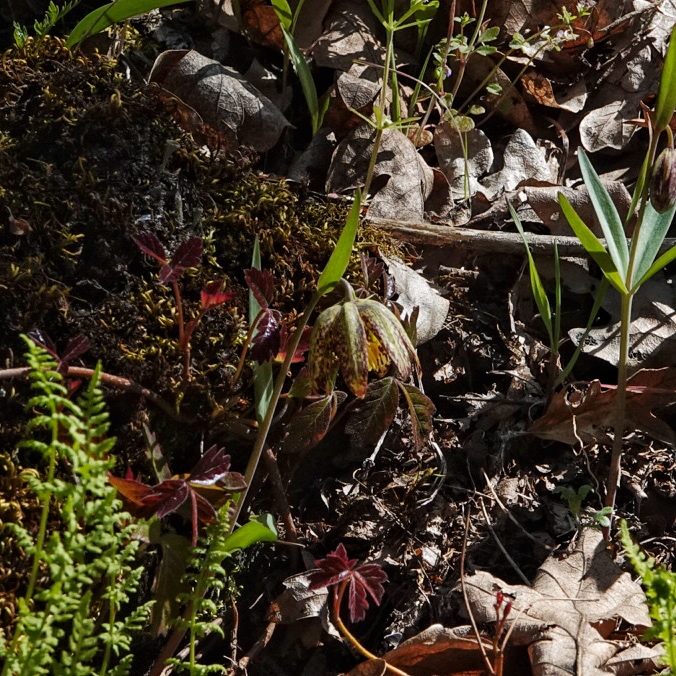
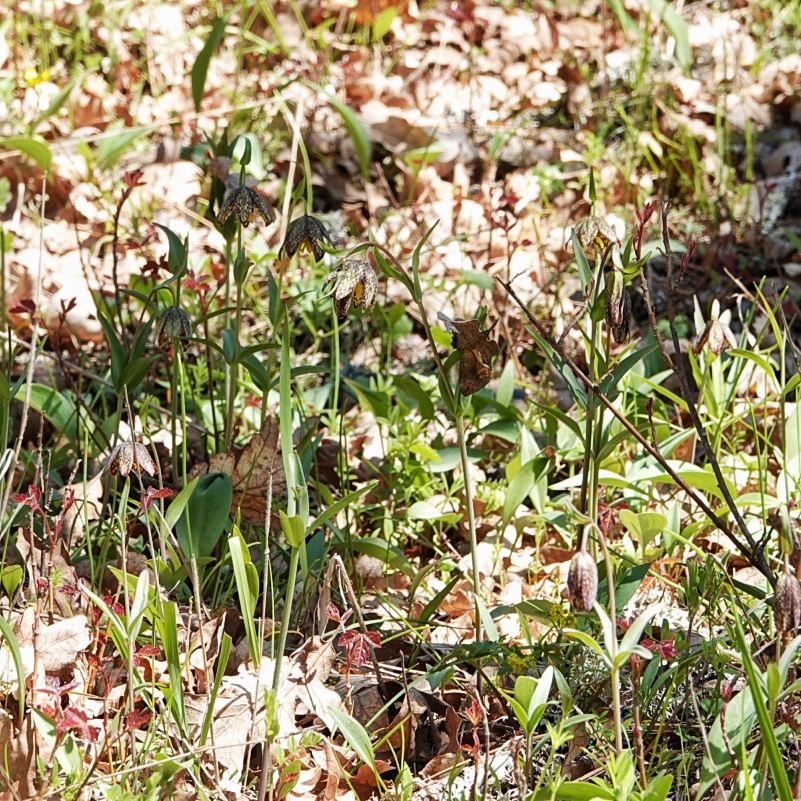
When I saw your title Fritillaria, I thought – oh it’s about a butterfly. Wrong! Although the fritillary butterflies are named that for the same reason – the checked pattern. These flowers are really exquisite!
My brother always called these “ghost plant”.